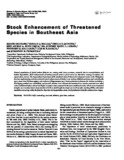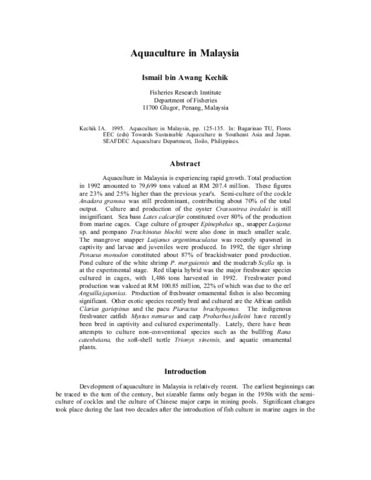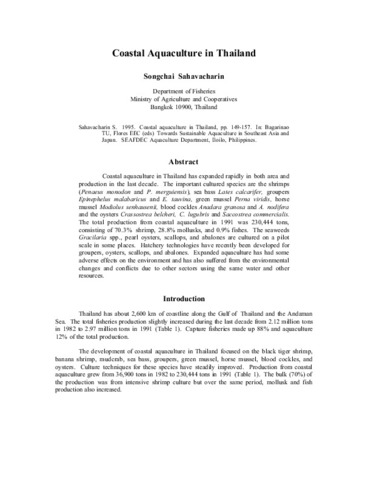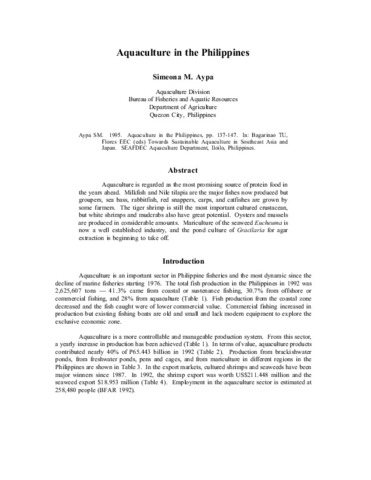Stock enhancement of threatened species in Southeast Asia

View/
Request this document
Date
2008Author
Page views
254Metadata
Show full item recordCited times in Scopus
Share
Abstract
Natural populations of global inshore fisheries are coming under heavy pressure, primarily due to overexploitation and habitat degradation. Stock enhancement of hatchery-reared seeds is perceived as an alternative strategy to enhance the regeneration process. The Aquaculture Department of the Southeast Asian Fisheries Development Center in the Philippines has been implementing activities related to stock enhancement of donkey’s ear abalone (Haliotis asinina), mud crabs (Scylla spp.), giant clam (Tridacna gigas), seahorses (Hippocampus spp.). Seed production techniques for abalone including a diet tagging method were established and juvenile abalone were released and monitored in a marine protected area. Mud crabs conditioned before release had higher recapture rates compared to the non-conditioned crabs, which can be translated to higher survivorship. Giant clams stocked at 8-10 cm shell length have higher survival 4 mo after stocking (90%), with initial mortalities occurring within the first few days due to transportation stress. Seed production trials for seahorse have begun.
Description
cc-covered journal, non-SEAFDEC first author
Suggested Citation
Okuzawa, K., Maliao, R. J., Quinitio, E. T., Buen-Ursua, S. M. A., Lebata, M. J. H. L., Gallardo, W. G., Garcia, L. M., & Primavera, J. (2008). Stock enhancement of threatened species in Southeast Asia. Reviews in Fisheries Science , 16(1-3), 394-402. https://doi.org/10.1080/10641260701678496
Subject
Collections
- AQD Journal Articles [1222]
Related items
Showing items related by title, author, creator and subject.
-
Aquaculture in Malaysia
Kechik, Ismail bin Awang. (Aquaculture Department, Southeast Asian Fisheries Development Center, 1995)Aquaculture in Malaysia is experiencing rapid growth. Total production in 1992 amounted to 79,699 tons valued at RM 207.4 million. These figures are 23% and 25% higher than the previous year's. Semi-culture of the cockle ... -
Coastal aquaculture in Thailand
Sahavacharin, Songchai (Aquaculture Department, Southeast Asian Fisheries Development Center, 1995)Coastal aquaculture in Thailand has expanded rapidly in both area and production in the last decade. The important cultured species are the shrimps (Penaeus monodon and P. merguiensis), sea bass Lates calcarifer, groupers ... -
Aquaculture in the Philippines
Aypa, Simeona M. (Aquaculture Department, Southeast Asian Fisheries Development Center, 1995)Aquaculture is regarded as the most promising source of protein food in the years ahead. Milkfish and Nile tilapia are the major fishes now produced but groupers, sea bass, rabbitfish, red snappers, carps, and catfishes ...




